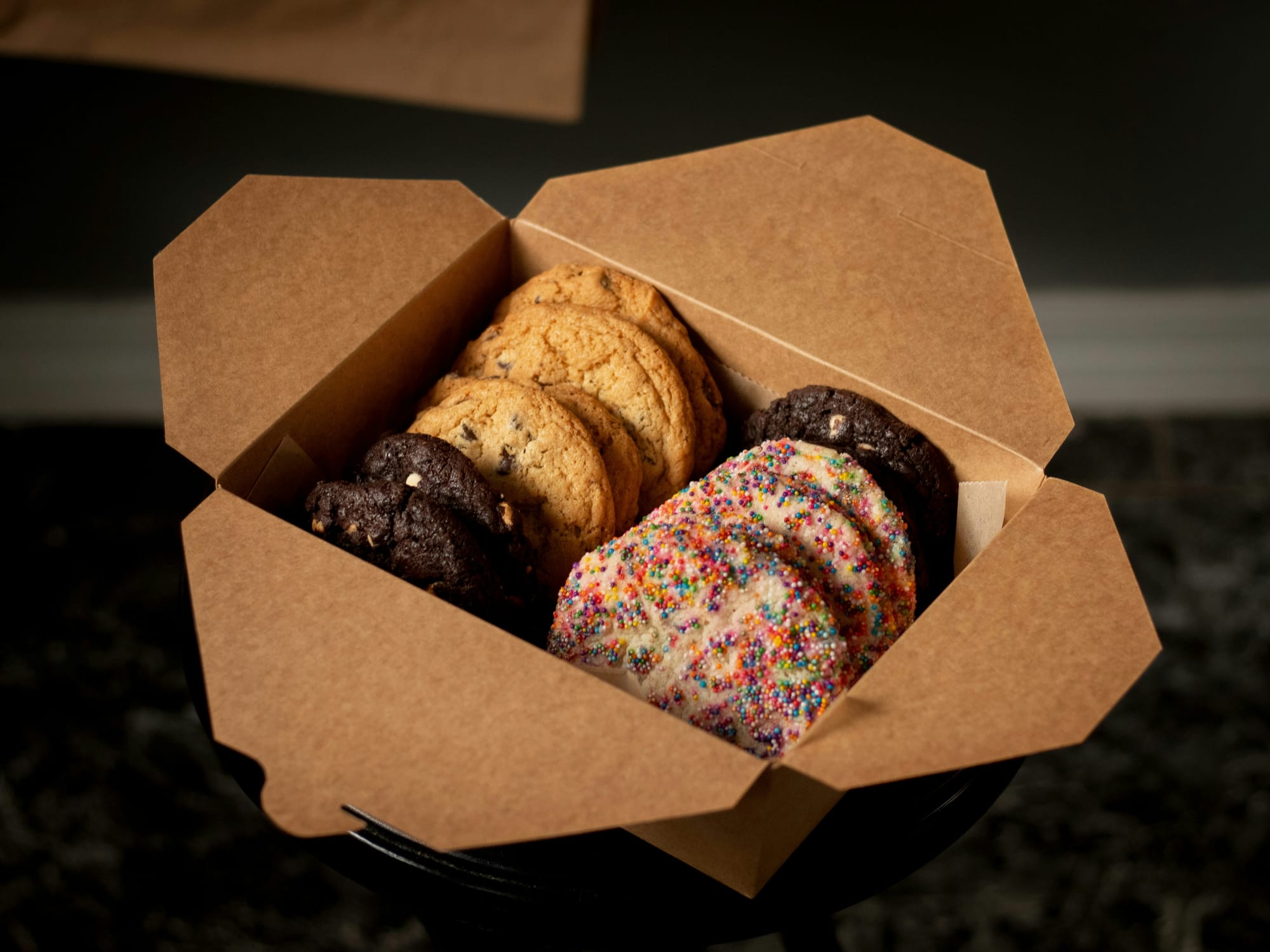May 25, 2025 | #41 | read on The Happier Studio | Free Version
Welcome to The Happier Newsletter, a weekly newsletter where I provide actionable ideas to help you build a happier, healthier, and more meaningful life.
What’s On Today
- Why Knowledge Isn’t Enough
- The COM-B Framework
- Turning Science Into Practice
Read the full article here.
Why Knowledge Isn’t Enough

Let me ask you something.
Have you ever stood in your kitchen, hand hovering over a cookie jar, fully aware that you shouldn’t... but took one anyway?
Or maybe you bought new running shoes with every intention of becoming a “runner,” but weeks later, they’re still staring at you from under the bed, untouched?
If so, welcome to the club.
This weird disconnect between what we know is good for us, and what we actually do, is so common it has a name: the intention-behaviour gap.
And no, it's not about laziness or lack of willpower.
It’s about how human behaviour actually works.
Let’s break this down.
Why We Know Better But Don't Do Better
Say you’ve read all about sugar. You understand what it does to your energy, your mood, your metabolism. You’re determined to cut down.
But then... someone brings donuts into the office.
Suddenly, all your good intentions dissolve, and before you know it, you’re halfway through a Boston cream.
Sound familiar?
You’re not alone. Research from the University of Cambridge shows that only about 50% of our intentions ever turn into actions.
So, what’s happening in that other 50%?
Well, here’s what science tells us:
- Our environment shapes our behaviour more than our intentions
- Habits operate largely below conscious awareness
- Present rewards often outweigh future benefits
- Abstract intentions lack actionable specificity
One of the most effective tools we have for closing this gap is implementation intentions: tiny, practical plans that help our brains automate the right behaviour in the moment.

They look like this:
- "If I'm offered dessert at lunch, then I'll ask for fruit instead"
- "If I finish dinner, then I'll immediately floss before sitting on the couch"
- "If my alarm goes off, then I'll put on my running shoes before checking my phone"
And here’s the kicker: A meta-analysis of 94 studies found that these simple if-then plans nearly tripled people’s chances of following through.
The COM-B Framework
Understanding your intentions is just one piece of the puzzle.
If you want to turn “I should” into “I do,” you also need to understand what behaviour actually requires in the first place.
That’s where the COM-B model comes in; a framework developed by behavioural scientists at University College London. It tells us that any behaviour is the result of three essential ingredients: Capability, Opportunity, and Motivation.
Let’s break each of those down.
1. Capability
This is about whether you can actually do the behaviour, both physically and psychologically.
You need the physical skills (like knowing how to cook a healthy meal), but also the mental capacity (like managing cravings or staying focused under stress).
Research shows that breaking complex behaviours into small, manageable steps significantly improves success. That’s because learning any new skill tends to follow a predictable path: from “I have no idea what I’m doing,” to “this still feels awkward,” to “this is second nature.”
Practical application: If your goal is to eat healthier, don’t start with a total diet overhaul. Begin by learning one or two simple recipes. Repeat them until you can make them on autopilot. Then layer in more.
2. Opportunity
Even if you're fully capable and motivated, behaviour won’t happen if the environment works against you.
Your surroundings, the people, tools, timing, and spaces around you, have a powerful influence over what you do (often without you realising it).
In one famous study by Brian Wansink, participants ate 22% more food when using larger plates. It wasn’t hunger driving the behaviour, it was plate size.
Practical application: Set up your environment to support the change you want.
For example:
- Keep healthy snacks in plain sight, and move junk food out of reach.
- Sleep in your workout clothes to reduce resistance in the morning.
- Use website blockers to limit distractions during work hours.Small tweaks can dramatically increase the chances of follow-through.
3. Motivation
This is the internal drive, the “why” behind the behaviour.
But not all motivation is created equal. Research on Self-Determination Theory shows that intrinsic motivation (doing something because it aligns with your values or brings joy) leads to more lasting behaviour change than extrinsic motivation (like pressure, rewards, or guilt).
If your goals are driven by shoulds and obligations, they’ll quickly lose steam. But if they’re connected to your deeper sense of identity or purpose, they’re more likely to stick.
Practical application: Choose behaviours that align with who you want to become.
- If you want to exercise more, pick activities you genuinely enjoy.
- Join communities or groups where your new habits are the norm.
- Link new behaviours to existing routines to create seamless momentum (e.g. meditate right after brushing your teeth).
Turning Science Into Practice
To bridge your own intention-behaviour gaps, follow this evidence-based framework:
1. Be Ridiculously Specific
Vague goals are one of the biggest traps.
“I’ll try to read more” or “I want to be healthier” sounds good, but your brain doesn’t know what to do with that.
The more specific you are, the more likely you are to follow through. Specificity helps your brain anticipate the behaviour and prepare for it.
Ask yourself:
- When will I do this? (Morning? After work?)
- Where will it happen? (Kitchen? Office? Park?)
- What exactly will I do? (10 minutes of journaling? 20 squats? A 5-minute meditation?)
Example: Instead of “eat better,” say, “Each weekday at 12:30pm, I’ll eat a salad I prepped the night before at my desk.”
2. Expect Resistance (and Plan For It)
You won’t always feel like doing the thing. That’s not a failure, that’s being human.
But people who plan for those moments are far more likely to succeed. This is where a strategy called mental contrasting comes in: Imagining the benefits of your new habit and the real-world obstacles you’ll face.
Before you begin, ask:
- What’s likely to throw me off? (Stress? Time pressure? Boredom?)
- What will I do when that happens? (What’s my fallback plan?)
This prepares your brain to stay grounded when motivation dips, and keeps you moving forward.
3. Start Tiny (Seriously, Tiny)
You don’t need to overhaul your life. In fact, please don’t.
Research from BJ Fogg at Stanford shows that starting too big is one of the biggest reasons we quit. Big changes require high motivation, and motivation fluctuates.
But small habits? They bypass resistance entirely. They’re easy. They feel doable. And once you start, it’s easier to keep going.
Instead of:
- “I’ll run every morning,” try “I’ll put on my running shoes when I get out of bed.”
- “I’ll meditate for 20 minutes,” try “I’ll take 3 deep breaths after I brush my teeth.”
These small shifts are seeds. And with repetition, they grow into powerful routines.
4. Track It Visibly
Progress isn’t always visible in the beginning. But tracking creates visibility and that builds momentum.
A meta-analysis of 138 studies found that self-monitoring is one of the most effective strategies for behaviour change. When you see your progress, even in small ways, it reinforces the habit loop in your brain.
You don’t need anything fancy. A simple system works best:
- Mark an X on a wall calendar for every successful day.
- Use a habit tracker app with reminders.
- Create a visible progress bar for your longer-term goal.
Make your progress visible. It keeps you accountable, and reminds you that change is happening, even when it feels slow.
Want a printable one to get started?
You can download the free Habit Tracker Worksheet I made. It's simple, minimal, and designed to help you build habits that stick.
This Week’s Challenge
The science is clear: knowledge and intentions aren't enough. True behaviour change requires smart implementation strategies that account for how your brain actually works.
So this week, try this:
- Choose one behaviour you've been meaning to start. Something that matters to you, but keeps getting pushed aside.
- Write a clear if-then plan — decide exactly when, where, and how it’ll happen.
- Reshape your environment to support the habit — remove friction, add cues.
- Shrink it down — make it so small, it feels almost too easy.
- Track your progress for 7 days — use a notebook, an app, or download this free habit tracker to make your progress visible.
You’re not aiming for perfection. You’re aiming for consistency.
Because every time you follow through, even in a tiny way, you’re not just building a habit. You’re teaching your brain: this is who I am now.
That’s how change happens. Quietly. Repeatedly. And sooner than you think, it becomes automatic.
Want to Learn More?
Book recommendations:
- Atomic Habits by James Clear
- Tiny Habits by BJ Fogg
- Mindless Eating by Brian Wansink
Research papers:
- "Implementation Intentions and Goal Achievement" by Gollwitzer & Sheeran
- "The Behavior Change Wheel" by Susan Michie et al.
